The flickering happens because when you clear the console it becomes blank for a moment.
To prevent this flickering you need to render a scene in a buffer in memory and after that output the buffer to console. You can use WriteConsoleOutput function for this.
Here is a simple example of the animation in Windows console. The most interesting part happens in the ANIMATION loop. RenderScene procedure renders the scene to the buffer, and WriteConsoleOutput function sends the content of this buffer to the console.
TITLE Animation example
INCLUDE Irvine32.inc
INCLUDE win32.inc
COLS = 80 ; number of columns
ROWS = 25 ; number of rows
CHAR_ATTRIBUTE = 0Fh ; bright white foreground
.data
console HANDLE 0
buffer CHAR_INFO ROWS * COLS DUP(<<'-'>, CHAR_ATTRIBUTE>)
bufferSize COORD <COLS, ROWS>
bufferCoord COORD <0, 0>
region SMALL_RECT <0, 0, COLS-1, ROWS-1>
x DWORD 0 ; current position
y DWORD 2 ; of the figure
character WORD '0' ; filled with this symbol
.code
main PROC
INVOKE GetStdHandle, STD_OUTPUT_HANDLE
mov console, eax ; save console handle
mov ecx, 70 ; draw 70 frames
ANIMATION:
push ecx
call RenderScene
invoke WriteConsoleOutput, console,
ADDR buffer, bufferSize, bufferCoord, ADDR region
INVOKE Sleep,250 ; delay between frames
pop ecx
loop ANIMATION
exit
main ENDP
ClearBuffer PROC USES eax
xor eax, eax
BLANKS:
mov buffer[eax * CHAR_INFO].Char, ' '
inc eax
cmp eax, ROWS * COLS
jl BLANKS
ret
ClearBuffer ENDP
CharToBuffer PROC USES eax edx bufx:DWORD, bufy:DWORD, char:WORD
mov eax, bufy
mov edx, COLS
mul edx
add eax, bufx
mov dx, char
mov buffer[eax * CHAR_INFO].Char, dx
ret
CharToBuffer ENDP
RenderScene PROC USES eax edx ecx
CALL ClearBuffer
; render 10 by 7 rectangle
mov edx, y
mov ecx, 7
ONELINE:
mov eax, x
push ecx
mov ecx, 10
ONECHAR:
INVOKE CharToBuffer, eax, edx, character
inc eax
loop ONECHAR ; inner loop prints characters
inc edx
pop ecx
loop ONELINE ; outer loop prints lines
inc x ; increment x for the next frame
inc character ; change fill character for the next frame
ret
RenderScene ENDP
END main
This example uses some function and structures that are not included into Irvine32.inc so I added some declarations in win32.inc file:
CHARTYPE UNION
UnicodeChar WORD ?
AsciiChar DB ?
CHARTYPE ENDS
CHAR_INFO STRUCT
Char CHARTYPE <>
Attributes WORD ?
CHAR_INFO ENDS
WriteConsoleOutput EQU <WriteConsoleOutputA>
WriteConsoleOutput PROTO,
hConsoleOutput:HANDLE,
lpBuffer:PTR CHAR_INFO,
dwBufferSize:COORD,
dwBufferCoord:COORD,
lpWriteRegion:PTR SMALL_RECT
